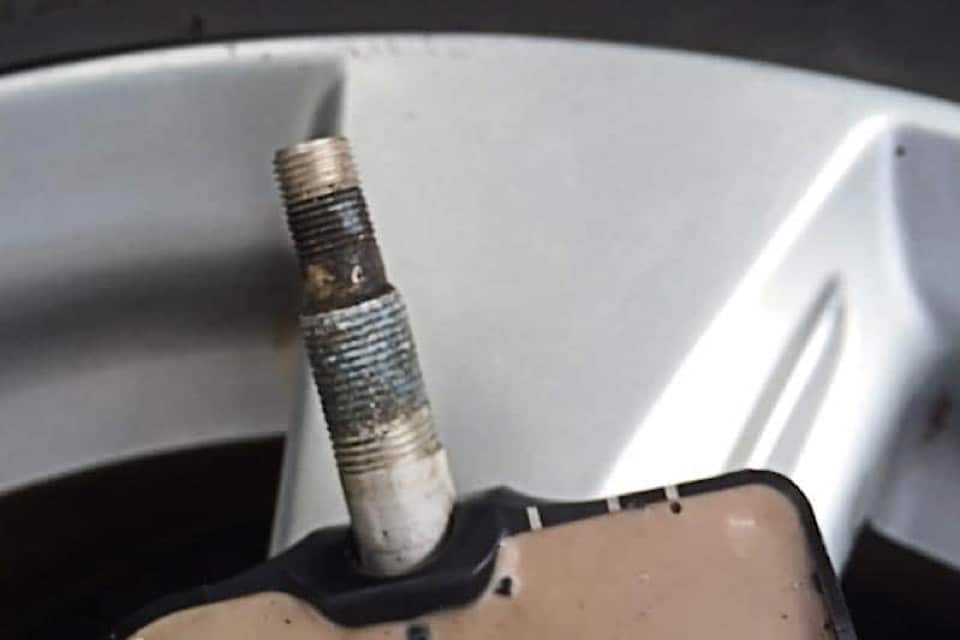Corrode And Explode? Mazda's TPMS is Actually Dangerous
- The valve stem is corroding in Mazda vehicles with TPMS.
- Some of the early TPMS systems have the sensor integrated into the valve stem, which can be easy to damage.
- The corroded valve stems can cause sudden tire blowouts.

A tire-pressure monitoring system (TPMS) became a mandatory bit of technology for each vehicle sold in the USA after September 1st, 2007. It’s an electronic system designed to monitor the air pressure inside your car’s tires.
Properly inflated tired wear more evenly, increase MPGs, and reduce the risk of a blow-out.
But like any technology, TPMS can be both helpful and mind-numbingly frustrating. And in the case of how Mazda implemented their TPMS, it can also be dangerous.
Direct vs. Indirect TPMS ∞
TPMS can be broken down into two major categories – direct and indirect.
Indirect TPMS (iTPMS) doesn’t use physical sensors and instead relies on data from the rotation of the wheels and other signals from the ABS and ESC systems. Direct TPMS (dTPMS) uses pressure sensors on each wheel and, depending on its implementation, can provide the owner with the exact pressure and temperature of each tire.
Of course, in order to do that, dTPMS systems need sensors, converters, micro-controllers, transmitters, and anything else you can think of that will likely break.
Valve Stem Corrosion ∞
First-generation dTPMS sensors are integrated into the valve stem which can present a number of problems:
- If the cap corrodes to the stem, any effort to remove it forcibly can damage the sensor
- The cost to replace dTPMS valve stems is expensive but failure to do so can result in catastrophic tire failure
- Use of tire sealants to repair a flat can void the manufacturer’s TPMS warranty
"the TPMS sensor just blew out while in the highway with my 2 year old son. This is the second TPMS that failed the same way. The first one i just replaced with a rubber valve and has been living with the Check Air dashboard light."
A common complaint about 2008-2010 Mazda vehicles is that the valve stem and nut corrodes.
Law Firms Gathering Information ∞
The possibility of a class-action lawsuit for certain Mazda owners is currently being investigated by Kantrowitz Goldhamer & Graifman, P.C.
They are currently looking for 2008-2010 Mazda3, Mazda5, Mazda6, CX-7, or CX-9 owners to [contact them regarding valve stem issues].
Generations Where This Problem Has Been Reported
This problem has popped up in the following Mazda generations.
Most years within a generation share the same parts and manufacturing process. You can also expect them to share the same problems. So while it may not be a problem in every year yet, it's worth looking out for.
1st Generation CX-7
- Years
- 2007–2012
- Reliability
- 34th out of 36
- PainRank™
- 11.43
- Complaints
- 144
1st Generation CX-9
- Years
- 2007–2015
- Reliability
- 30th out of 36
- PainRank™
- 8.65
- Complaints
- 210
2nd Generation MAZDA3
- Years
- 2009–2013
- Reliability
- 35th out of 36
- PainRank™
- 18.92
- Complaints
- 291
2nd Generation MAZDA5
- Years
- 2006–2011
- Reliability
- 24th out of 36
- PainRank™
- 4.68
- Complaints
- 61
2nd Generation MAZDA6
- Years
- 2009–2012
- Reliability
- 26th out of 36
- PainRank™
- 5.17
- Complaints
- 81